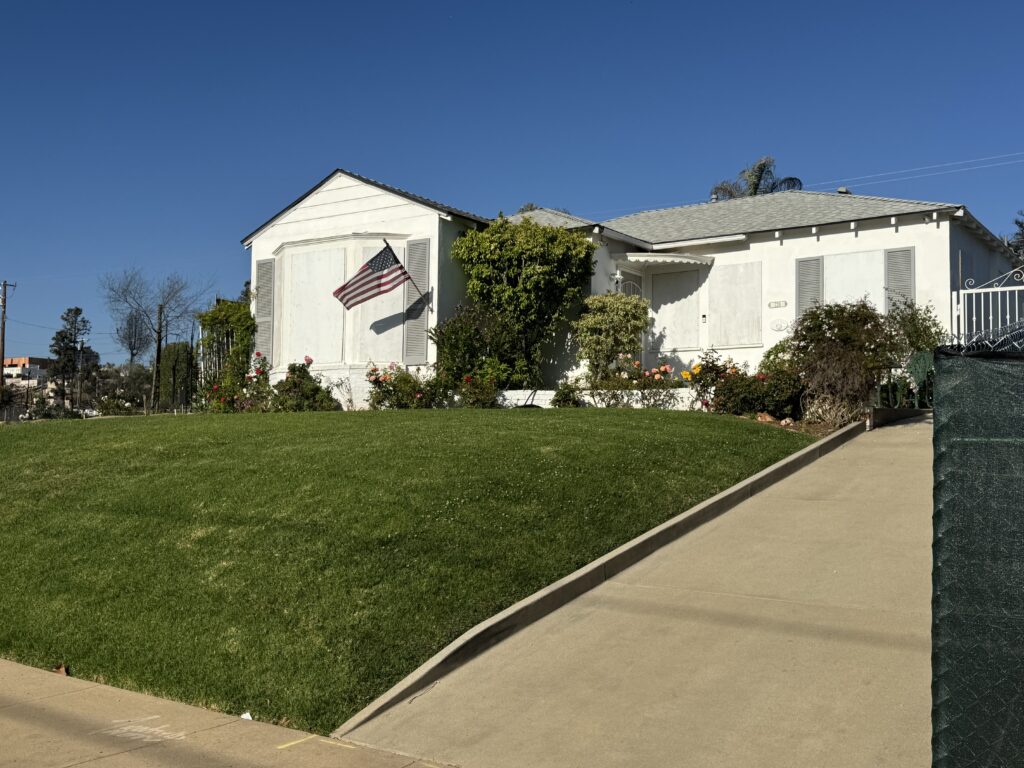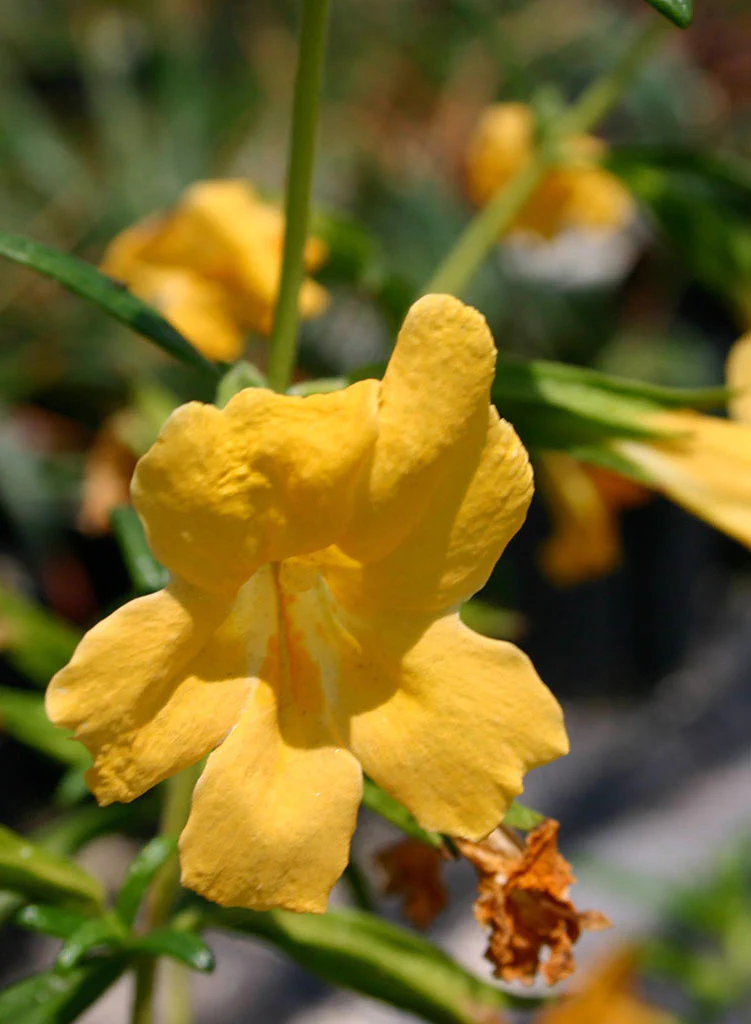
This house on Radcliffe survived the fire, the photo was taken June 16. The property has a cement block wall on one side. The yard has a large green watered lawn and plants right next to the home, including roses, which are fire resisistant.
It has been shown that well-hydrated plants and lawns stop fires. Just ask yourself why don’t golf course fairways burn?
But after the Palisades and Eaton Fires, it was decided that yard vegetation next to homes was one of the reasons that almost 12,000 structures burned.
In 2023, the California Board of Forestry and Fire Protection had been required to update regulations for Wildfires and was still undergoing the process when the most recent fires happened. California Governor Gavin Newsom issued Executive Order N-18-25, which directed the Board to complete the formal rulemaking process for Zone 0 regulations by December 31, 2025. Zone 0 would not allow any vegetation within five feet of a home.
The Pacific Palisades Community Council in a May 6 letter to the Zone Zero Advisory Committee noted that “the proposed regulations are inconsistent with that intent, threatening a negative impact ‘with a loss of tree and shrub cover … biodiversity, temperatures, humidity, erosion, water quality, public health outcomes, and loss of personal security.”
In addition, PPCC wrote, “there’s the loss of the natural beauty of our neighborhood gardens and the mental peace they offer,” and further noted that an urban setting should not be treated the same as rural setting click here.
When Palisades rebuilds, landscaping will become a major issue, particularly if Zone Zero becomes law.
A resident, Nancy Brennan, who is a docent at the Natural History Museum, helped CTN research fire-resistant plants, which are defined drought tolerant, have a low risk of ignition and can withstand fire.
Brennan spoke to Daniel Feldman, the senior manager of horticulture at the NHM, who said, “My heart goes out to you and your neighbors. One of my coworkers recommended a really great online resource for your inquiry that should answer the questions you have about fire-resistant native plants: click here.
“In the section titled ‘Plant Characteristics’ it has great information about the types of plants and the maintenance practices that contribute to increased flammability, and it also has a list of plants that have fire-resistant characteristics. Toyon, western sycamore, coast-live oak, yarrow, ceanothus, and barberry are some of the common native plants that make the list!”
Feldman also recommended a book on fire-resistant landscaping: Firescaping, by Douglas Kent.
Next Brennan went to the Theodore Payne website click here and found examples of fire-resistant plants that include California Yarrow (known for its low flammability and ability to recover quickly after a fire); Rockrose (drought-tolerant and fire-resistant); manzanita (a native plant that can withstand fire); island mallow and verbena (both are fire-resistant).
Brennan also wrote, “I ran across the Zava Ranch list while looking to see if artichokes (thistle family) were fire resistant.”click here. The site explains that low maintenance, fire-resistant drought-tolerant plants exist.
“Any plant species can burn. No plant is fire-proof,” according to Zava. “According to Defensible Space, fire-resistant plants are those that do not readily ignite from a flame or other ignition sources. These plants can be damaged or even killed by fire; however, their foliage and stems do not significantly contribute to the fuel and fire’s intensity.”
The site has a list of fire-resistant plants including succulents, geranium, fruit trees, vegetable gardens, coastal live oak (which can act as a shield against flying embers), Toyon tree and 19 other suggestions – including roses.
The site notes “Fire-resistant drought-tolerant landscaping plays a crucial role in the fire prevention strategy.”
It appears that well-placed fire-resistant plants and more space between structures, might need more scientific research from the Board of Forestry and Fire Protection.





But of course we aren’t allowed to water enough to keep lawns and plants wet.
Citing foliage and structure type is the lowest and cruelest form of gaslighting. There is ONE reason the Palisades burned down…NO WATER.